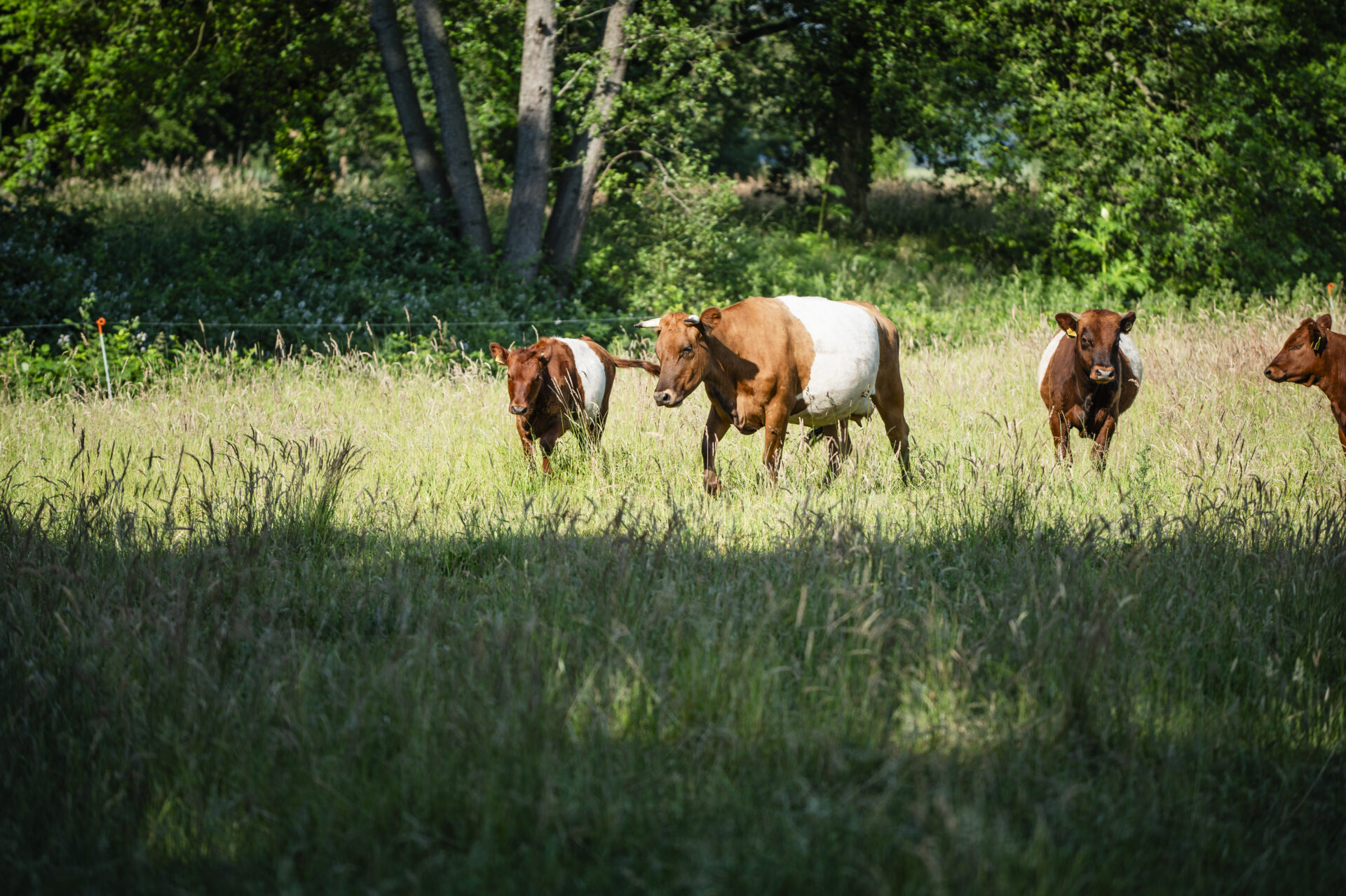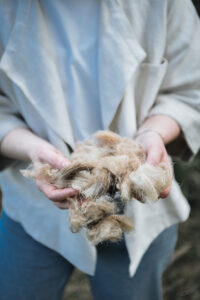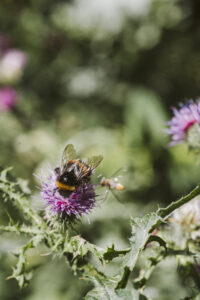Arjen &
Winny van Buuren
Activities:Regenerative agriculture
Founder:Arjen & Winny van Buuren
Launched:2018
Location:Achterhoek & Twente

Introductie
On over 200 hectares of land in the Netherlands, Arjen and Winny van Buuren run three regenerative farms. They close loops, create biodiversity, nourish the soil and transform a large part of their crops into regional products. And every day at five o’clock, they call it a day. Arjen: “Nature is our best employee.”
 Velhorst estate in Lochem, the Netherlands. Photographer: Gabriela Hengeveld
Velhorst estate in Lochem, the Netherlands. Photographer: Gabriela Hengeveld
“Working together with nature feels like breathing to me, it’s the most natural thing in the world”, says Arjen van Buuren, who has been a regenerative farmer for over 40 years. After spending a prolonged period on a farm in Ireland, he returned to the Netherlands in 2014 and decided to start teaching. “But after a while I got itchy feet. When Natuurmonumenten – a Dutch nature conservation organisation – was looking for someone to run Velhorst estate, my wife Winny and I submitted a plan and were selected.”
Over the last five years, Arjen and Winny have been living and working on the estate in the Dutch province of Gelderland, creating a mixed organic certified and regenerative farm. “We have cows, a few sheep and 50 hectares of arable land where we grow ancient grains, quinoa, rapeseed, potatoes and sunflowers”, Winny says. “Anything that’s left over from the land is fed to the livestock and our cows graze on herbal grasslands. They don’t get soy or other cattle feed, which works fine, because they’re a robust ancient Dutch breed. In the barn, they lay on straw that’s made from our own grains and their manure goes directly back to the fields. This is how we try to close as many loops as possible.”
Healthy food
“We want to ensure people have access to healthy food. Now, but also in the time to come”, Winny shares. To keep their business model future proof at the same time, the couple sells all their produce directly to consumers, local restaurants, shops and bakers. In addition, they work together with local entrepreneurs to turn a large part of their fresh produce into regional products, like pasta and oils.
Because their model works so well, Arjen and Winny decided to lease two additional estates in addition to Velhorst. “All in all, we now manage over 200 hectares”, Arjen says, “but every day at five o’clock we kick up our feet and call it a day. When we say this to other people, they don’t believe us, but the two of us are just very efficient. Winny does the marketing, I grow the produce. Plus, if you let nature do its thing, she’s your best employee.”
Uitgelichte quote
The agro-industry does not want to embrace it, because there is nothing for them to gain from regenerative agriculture
 Arjen and Winny van Buuren at Velhorst estate. Photographer: Gabriela Hengeveld
Arjen and Winny van Buuren at Velhorst estate. Photographer: Gabriela Hengeveld
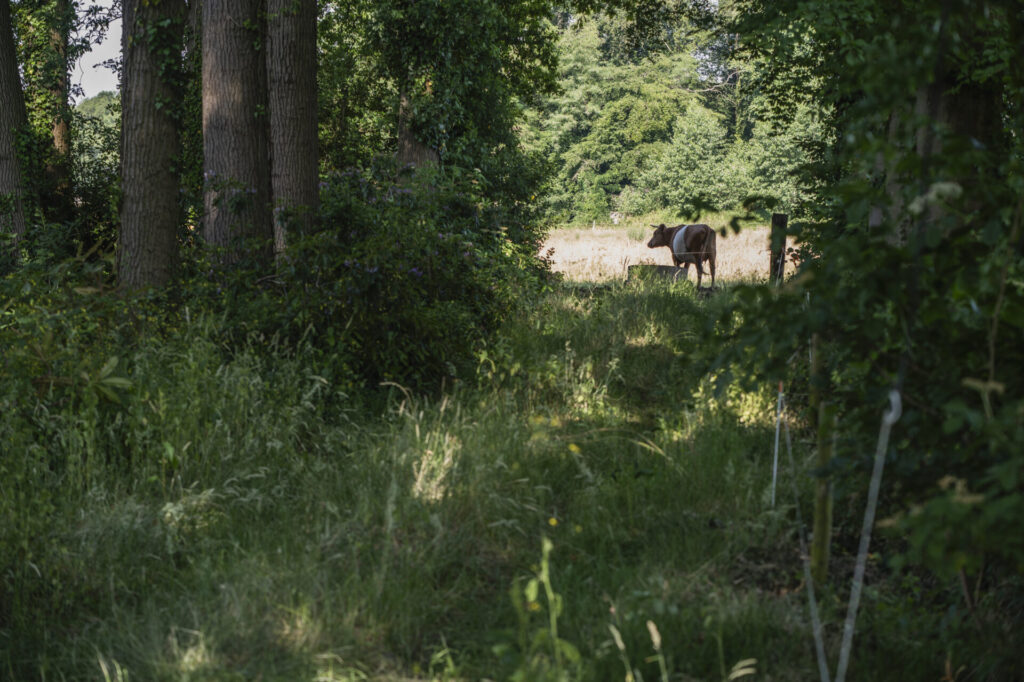 The cattle of Arjen and Winny graze on herb-rich grassland. Photographer: Gabriela Hengeveld
The cattle of Arjen and Winny graze on herb-rich grassland. Photographer: Gabriela Hengeveld
Soil first
“We sow our grains, quinoa and sunflowers and only come back when they’re ready to be harvested. In the meantime, we don’t have to do anything, not even irrigation”, Arjen says. This is because he’s been working on his soil biology for years. “It’s the most important production capital you have as a farmer, because soil life takes care of your crops”, he explains. “It’s the reason why we use solid manure and compost, we keep the soil covered year round and we sow a mixture of cover crops immediately after we harvest to replenish the nutrients in the soil.”
Furthermore, Arjen and Winny minimise all ploughing and digging, to disturb the soil life as little as possible. Due to all this good care, artificial fertiliser has become completely absolute. “If you do use artificial fertiliser, it deteriorates your soil life and the nutrient density of your crops decline. Because what’s not present in the soil, a crop cannot absorb either”, Arjen knows. “Moreover, crops tend to get lazy from artificial fertiliser, making them more susceptible to diseases, which means you have to spray with chemicals to prevent pests. If you don’t want any of this, you simply have to take good care of your soil life and attract biodiversity for natural pest control. It’s no rocket science, but the agro-industry doesn’t want to embrace it, because there is nothing for them to gain from regenerative agriculture.”
Uitgelichte quote
Crops tend to get lazy from artificial fertiliser, making them more susceptible to diseases
 Arjen & Winny van Buuren amidst the cornflowers on Velhorst estate. Photographer: Gabriela Hengeveld
Arjen & Winny van Buuren amidst the cornflowers on Velhorst estate. Photographer: Gabriela Hengeveld
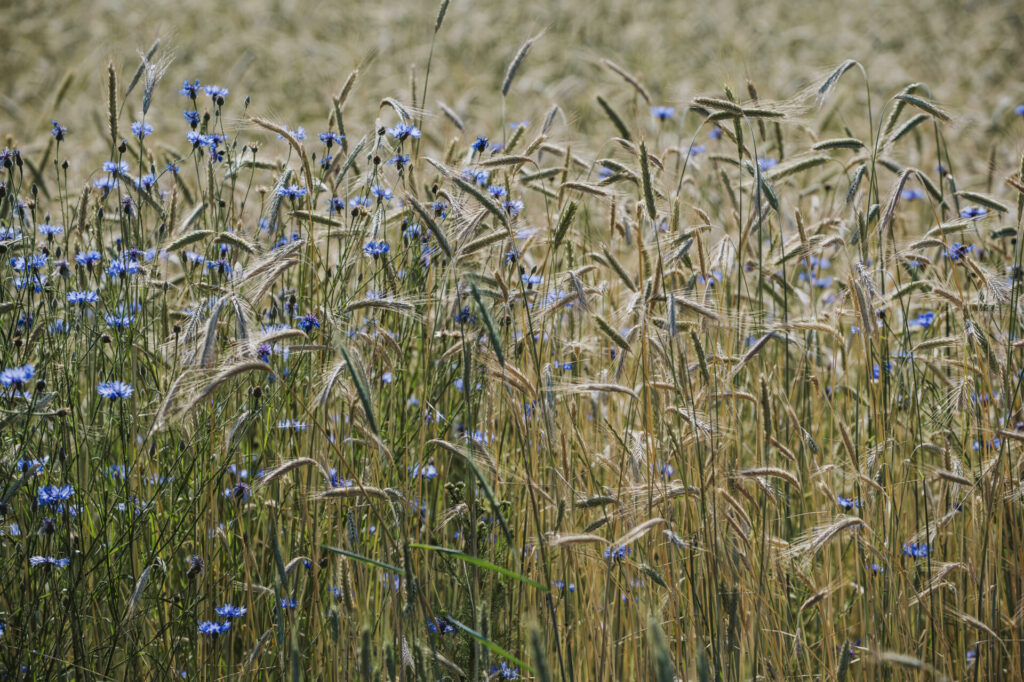 These regenerative fields of grain are a beacon of biodiversity. Photographer: Gabriela Hengeveld
These regenerative fields of grain are a beacon of biodiversity. Photographer: Gabriela Hengeveld
Beacon of biodiversity
To share their knowledge and experience, Arjen and Winny participate in multiple research projects. Together with knowledge centre Eis, for example, they have installed insect cameras on the land that work that take pictures around the clock. “This way, we’re able to keep track of the amount of species, but also of the increase in larger insects that attract birds”, Winny explains. “When you walk through the fields, you notice a huge difference from when we just arrived. There’s always something buzzing and flying, even if biodiversity is rapidly declining in the rest of the Netherlands.”
“Today we worry about wild bees and nitrogen, tomorrow the climate or water crisis will be at the forefront of our minds. All these things come down to how farmers treat their soil”, Arjen says. Therefore, he doesn’t understand why the Dutch government is currently spending billions to buy out livestock farmers near nature reserves, instead of enabling them to make the transition towards regenerative agriculture. “That way, farmers would be able to stay on their land, all kinds of ecological crises would be solved and it’s cheaper too.”
Resilience
“When I walk around here during the early morning and I see all the animals, insects and plants, knowing how it was before and what it looks like now, that truly fills me with happiness”, Arjen shares. He emphasises that, in addition to collaborating with nature, following your inner nature is equally important. “For example, I’m a lousy carrot farmer, so I don’t grow them. Do things that give you energy, follow your heart and be patient. Even, or maybe especially, when things are tough.”
Originally published on the 24th of July 2023. Translated on the 10th of June by Nadine Maarhuis.
